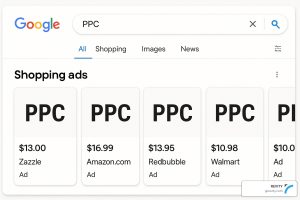Welcome to our comprehensive guide on leveraging video marketing content to boost sales and enhance your brand’s visibility. In today’s digital landscape, video content is a pivotal tool in capturing audience attention and driving engagement, and there are marketing video services to help.
This blog is designed to walk you through the entire process of creating effective video marketing content, from the initial conception of your message to the strategic distribution of your videos. Whether you want to take this on yourself or want to know what it will be like working with an agency to create your videos, this blog is for you.
We’ll cover key topics such as crafting compelling narratives, optimizing video production for various platforms, and analyzing performance metrics to refine your strategy.
Our goal is to equip you with practical tips and insights that will help you harness the power of video marketing to achieve tangible improvements in your sales figures and market presence.
Whether you’re looking to launch your first video campaign or seeking to elevate your existing efforts, join us as we explore the dynamic world of video marketing and its potential to transform your business outcomes.
Let’s start by understanding the power of video marketing.
Understanding the power of video marketing
One of the key advantages of using videos for marketing is their ability to capture attention. In a fast-paced world where people’s attention spans are shrinking, creating visually captivating content that stands out is crucial.
Video marketing allows you to deliver your message concisely but impactfully. With limited time to convey your story, it is important to focus on a clear, concise script that eliminates any unnecessary clutter. Using simple language and relatable examples ensures your content is accessible to a wide range of viewers.
Telling a story
Humans are naturally drawn to stories. Craft a story that resonates with your target audience, highlighting their pain points and offering realistic solutions. By creating a strong narrative arc that captures their attention and engages their emotions, you’ll leave a lasting impact that sets you apart from your competitors.

The power of authentic storytelling
Authenticity and relatability are essential components of effective video marketing content. Audiences want to connect with real people and genuine experiences. Embrace the unique aspects of your brand or personality and infuse them into your videos. Showcasing the human side of your business or brand helps build trust and establish a genuine connection with your viewers.
Call-to-action: driving action and engagement
A successful video marketing campaign must have a clear call-to-action (CTA) to drive your viewers toward a desired action. Whether it’s subscribing to your channel, visiting your website, or making a purchase, a strong CTA guides your audience in taking the next steps.
Ensure that the CTA is clear, concise, and easy to follow. By creating a sense of urgency or offering an incentive, you’ll encourage immediate action and increase engagement.
The role of storyboarding in video production
When it comes to creating captivating video content, storyboarding is one of the most critical steps in the process. Storyboarding visually represents a video’s sequence, scene by scene. It serves as a blueprint that helps filmmakers, videographers, and editors bring their vision to life.
Firstly, storyboarding helps in the planning stage of video production. It allows the creative team to brainstorm different ideas and visualize how the final video will look.
By organizing and arranging the story’s flow on paper or a digital platform, you’ll gain valuable insights about the pacing, transitions, and overall structure of the video. This helps ensure that each scene contributes to the overarching message or story the video aims to convey.
From storyboard to screen: bringing your vision to life
This intricate process begins with the storyboard, where ideas take their first visual form, sketching out scenes frame by frame, setting the stage for what’s to come. As these blueprints evolve, each scene transitions from mere concepts to vibrant visuals on screen, guided by the hands of skilled artists, technicians, and visionaries.
It’s a dance between imagination and reality, where every detail is meticulously crafted to ensure that the final product resonates with the original vision.
Post-production and publishing your video
Once you have finished shooting your video footage, it’s time to give it the final touches through post-production and get ready to publish it. This process may seem overwhelming at first, but with a bit of guidance, you’ll be able to produce and publish impactful video content that will engage your audience.
1. Organizing and reviewing your footage
The first step in post-production is to organize and review all the footage you have captured. This involves importing your video files into video editing software and creating a project where you can easily access and arrange your clips. Take your time to review each clip and make notes of the best moments or takes that should be included in the final video.

2. Video editing
Once you have organized your footage, it’s time to edit your video. Start by assembling your clips logically to tell your story or convey your message effectively. Trim any unnecessary footage and add transitions between scenes to create a smooth flow. You can also enhance your video by adjusting the brightness, contrast, or color levels.
3. Adding sound effects and music
Sound effects and music have the power to greatly enhance the impact of your video content. Use appropriate sound effects to emphasize certain actions or moments in your video.
For example, if you’re showcasing a recipe, you can add sizzling sounds to make the dish more appealing. Similarly, carefully select background music that complements the mood and message you want to convey. Ensure that the volume levels of both the dialogue and the background music are well-balanced to avoid overpowering each other.
4. Incorporating text and graphics
To make your video more accessible and engaging, consider incorporating text and graphics. Use on-screen text to highlight key points, provide additional information, or display captions if necessary. You can also include graphics such as charts, graphs, or images to support your content visually.

5. Optimizing for different platforms
Before publishing your video, optimizing it for different platforms is essential. Each platform has specific requirements and guidelines, so make sure your video meets those standards.
For example, social media platforms may have limitations on video length or file size, while websites may require specific video formats. To work around this, you can create different versions of your video for different platforms. By optimizing your video for the platform where you’ll be posting it, you’ll ensure that it reaches your target audience on the platforms they prefer.
Help for optimizing for different platforms
If the thought of optimizing your video for different platforms overwhelms you, don’t worry. This section is for you. We recommend YouTube for in-depth tutorials, Instagram for short clips meant to quickly engage your audience, or LinkedIn for professional insights. Each channel offers unique advantages to connect with your audience.
Which platform is right for you? That entirely depends on your business and what you have to offer. If you feel stuck not knowing where to post your content, consider talking to a marketing professional who will have more insights to help you.
6. Publishing and promoting your video
Once your video is ready, it’s time to publish and promote it. Start by uploading it to your preferred video hosting platform. Create an engaging title, write a compelling description, and choose relevant tags to help users find your video easily.
Share your video on your website and social media channels, and encourage your audience to like, comment, and share it. Engage with your viewers by responding to their comments and questions.
Remember to use trending hashtags that are relevant to your video and write out full descriptions that accurately describe what your video is about. This will help your audience to find you and engage with your content.
Additionally, you can collaborate with influencers or industry professionals to expand your video’s reach. Often, when you collaborate with others, some of their audience/followers will be interested in your services and subscribe to your channel, too. This is a great way to reach more people.
Marketing video services with Revity
Ready to elevate your brand with the power of marketing video services? Don’t navigate this journey alone. Contact Revity today to unlock the full potential of your video marketing content/campaigns. Our team of experts is dedicated to crafting customized, impactful video content that resonates with your target audience and drives results.
From strategy development to production and analytics, Revity is your partner in transforming your vision into compelling video narratives that boost engagement and sales. Take the first step towards achieving your marketing goals. Reach out to Revity now, and let’s create video content that sets your brand apart.
































